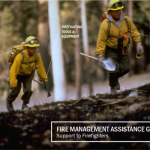AUSTIN, Texas – As Texans rebuild or repair their homes damaged by the May 4 through June 22 storms, the Federal Emergency Management Agency and local home improvement stores have teamed up to provide free information, tips and literature on making homes stronger and safer.
FEMA mitigation specialists will be on hand in Brazoria, Harris, Travis, Walker, and Van Zandt counties at in-store information centers to answer questions and offer home improvement tips and proven methods to prevent and lessen damage from future disasters. Most of the information is geared for do-it-yourself work and general contractors.
Also, if you’re thinking of building a storm shelter or safe room, literature is available about the best options. Safe rooms built to FEMA specifications have saved thousands of lives.
Advisors will be available at five locations Aug. 27 – Sept. 1. Except as noted, hours of operation are Thursday – Saturday, 7 a.m. to 4:30 p.m.; Sunday, 8.m. to 4:30 p.m.; Monday, 7 a.m. to 4:30 p.m.; Tuesday (Sept. 1), 7 a.m. to 3:30 p.m.
Brazoria County: Lowe’s located at 200 Highway 332 East, Lake Jackson, TX 77566
Harris County: Home Depot located at 10707 N. Fwy, Houston, TX 77037
Travis County: Home Depot located at 8801 S I-35, Austin, TX 78744
Walker County: Home Depot located at 215 Interstate 45 North, Huntsville, TX 77340
Van Zandt County: Ace Hardware, 221 E. Highway 243, Canton, TX 75103
Mitigation teams will also have free reference booklets in English and Spanish on protecting your home from flood damage and cleaning up mold and mildew. More information about strengthening property can be found at http://www.fema.gov/what-mitigation.
FEMA’s National Flood Insurance Program has a call center to answer Texas policyholders’ flood insurance questions. Specialists can help with servicing claims, providing general information and offering technical assistance to aid in recovery. To speak with a flood insurance specialist, call 800-621-3362 between 8 a.m. and 6 p.m. Monday through Friday.
Visit www.fema.gov/texas-disaster-mitigation for publications and reference material on rebuilding and repairing safer and stronger.
For more information on Texas recovery, visit the disaster web page at www.fema.gov/disaster/4223, Twitter at www.twitter.com/femaregion6 and the Texas Division of Emergency Management website, http://www.txdps.state.tx.us/dem.
###
All FEMA disaster assistance will be provided without discrimination on the grounds of race, color, sex (including sexual harassment), religion, national origin, age, disability, limited English proficiency, economic status, or retaliation. If you believe your civil rights are being violated, call 800-621-3362 or 800-462-7585(TTY/TDD).
FEMA’s mission is to support our citizens and first responders to ensure that as a nation we work together to build, sustain, and improve our capability to prepare for, protect against, respond to, recover from, and mitigate all hazards.
The SBA is the federal government’s primary source of money for the long-term rebuilding of disaster-damaged private property. SBA helps businesses of all sizes, private non-profit organizations, homeowners and renters fund repairs or rebuilding efforts and cover the cost of replacing lost or disaster-damaged personal property. These disaster loans cover losses not fully compensated by insurance or other recoveries and do not duplicate benefits of other agencies or organizations. For more information, applicants may contact SBA’s Disaster Assistance Customer Service Center by calling 800-659-2955, emailing disastercustomerservice@sba.gov, or visiting SBA’s website at sba.gov/disaster. Deaf and hard-of-hearing individuals may call 800-877-8339.
FEMA’s temporary housing assistance and grants for childcare, medical, dental expenses and/or funeral expenses do not require individuals to apply for an SBA loan. However, those who receive SBA loan applications must submit them to SBA to be eligible for assistance that covers personal property, transportation, vehicle repair or replacement, and moving and storage expenses.





